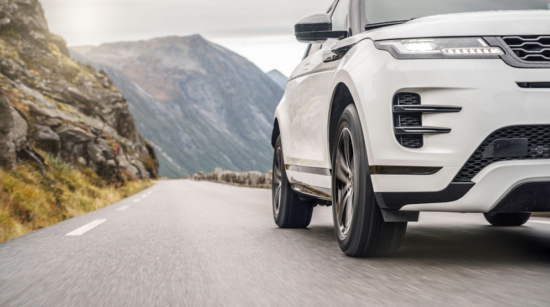Up to 30% better wear resistance – Nokian Tyres updates all-season range
 Seasonproof 1 is aimed at drivers “who need reliability & first-class safety for snowy and slushy winter days but who also appreciate excellent performance & effortless driving feel in the summer” (Photo: Nokian Tyres)
Seasonproof 1 is aimed at drivers “who need reliability & first-class safety for snowy and slushy winter days but who also appreciate excellent performance & effortless driving feel in the summer” (Photo: Nokian Tyres)
Less than three years after introducing its Seasonproof all-season tyre, Nokian Tyres has announced a successor. Named Seasonproof 1, this latest generation tyre delivers “improved wear resistance and mileage.” Seasonproof 1 will debut by the end of this year in a 63-dimension range for cars, SUVs and CUVs.
Nokian Tyres says reports employing “multiple innovative technical solutions” to ensure the new all-season tyre offers maximum safety, improved durability, and low rolling resistance. The tyre maker tailored the Seasonproof 1 tread pattern for “optimal year-round use” by employing a number of innovations as part of its Season Sense concept.
Season Sense
The aim of Season Sense is to combine driving safety in rain and slush with precise handling on dry summer roads. Players in the Season Sense team include a directional tread pattern with a stiff block design, Multifaceted Snow Claws between the tread blocks for “powerful grip and stable driving feel” when braking and accelerating on snow, Snow Grip Boosters on the tread blocks to improve longitudinal and lateral grip, channels within the tread to push slush and water away from the contact area, and the new Season Sense 1.0 compound.
The manufacturer explains that Season Sense 1.0 rubber compound improves safety and durability and excels in varying conditions. “It works magnificently along a wide range of temperatures and can withstand intense wear even in intense summer heat. Winter grip offers safety from the milder winter days to the ones below zero. Season Sense 1.0 comes with excellent wet grip and low rolling resistance.”
Grip at high speeds
So how does Seasonproof 1 perform? The tyre hasn’t yet participated in any independent tyre tests, so we must rely upon what Nokian Tyres tells us. It claims Seasonproof 1 has “excellent handling properties on both dry asphalt as well as streets filled with autumn sleet.” Specifically, the manufacturer says the new all-season tyre “offers extreme stability and grip, even at high speeds.” High speed handling is improved by multilevel block support. “For drivers this means excellent stability and quick, responsive steering feel.”
The tread pattern “offers excellent summer performance.” Nokian Tyres additionally says it developed the tread blocks and sipes in the bound centre area to provide “optimal performance for varying weather conditions and excellent wet and dry braking properties.” Furthermore, wet and dry surface siping technology “offers shorter stopping distances and safety through corners by advanced traction and control.”
To offer even better mileage, Nokian Tyres made “major improvements” in wear resistance. It says this can result in “one driving season more” for the tyre, depending on driving style. “Improved mileage means a longer service life for the tyre,” comments Jarno Röytiö, development manager at Nokian Tyres. “Based on internal tests, the wear resistance is up to 30 per cent better compared to Nokian Tyres Seasonproof.”
For added safety, Nokian Tyres Seasonproof 1 features a Driving Safety Indicator (DSI). This indicator shows the remaining tread depth in millimetres and helps drivers to know when they should replace their tyre.
Electric Fit
All Seasonproof 1 sizes carry the 3PMSF snowflake marking that indicates approval for use in countries with specific winter requirements. The range will cover 15- to 19-inch rim diameters with speed ratings of T (190 km/h), H (210 km/h) V (240 km/h) W (270 km/h) and Y (300 km/h).
Electric vehicles haven’t been left out in the cold, either. The launch of Seasonproof 1 also serves as the debut of a new Nokian Tyres branding, Electric Fit. This indicates that tyres from Nokian Tyres “can be equally fitted on internal combustion engine and electric cars, providing safe and high-quality product performance regardless of the car’s powertrain.” Electric Fit doesn’t appear as a sidewall logo in publicity photos for the new range, so we will have to wait and see how Nokian Tyres intends to publicise its products’ EV suitability.


Comments